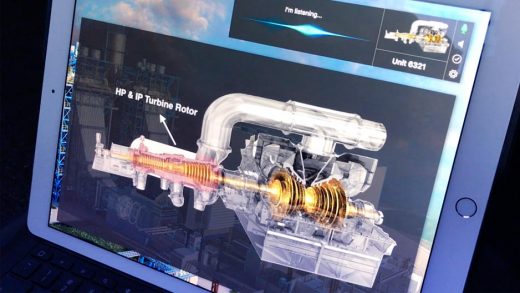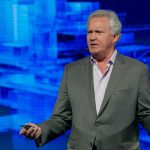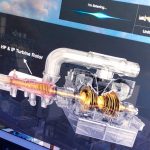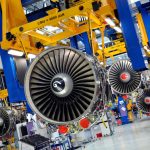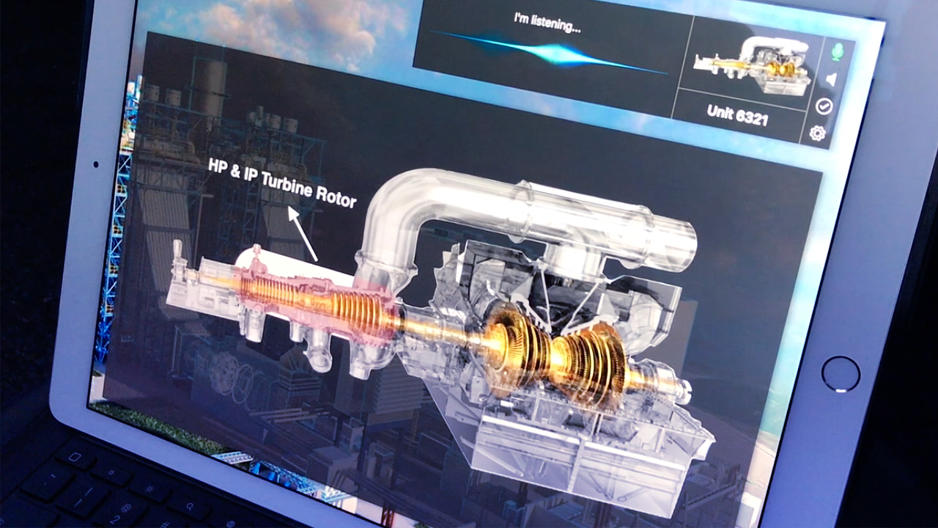Watch A GE Engineer Chat With A Robotic Power Plant
We are entering the era of talking machines—and it’s about more than just asking Amazon’s Alexa to turn down the music. General Electric has built a digital assistant into its cloud service for managing power plants, jet engines, locomotives, and the other heavy equipment it builds. Over the internet, an engineer can ask a machine—even one hundreds of miles away—how it’s doing and what it needs. Fast Company got an exclusive demonstration of the technology before its debut at GE’s Minds + Machines conference in San Francisco.
Voice controls are built on top of GE’s Digital Twin program, which uses sensor readings from machinery to create virtual models in cyberspace. “That model is constantly getting a stream of data, both operational and environmental,” says Colin Parris, VP at GE Software Research. “So it’s adapting itself to that type of data.” The machines live virtual lives online, allowing engineers to see how efficiently each is running and if they are wearing down.
GE partnered with Microsoft on the interface, using the Bing Speech API (the same tech powering the Cortana digital assistant), with special training on key terms like “rotor.” The twin had little trouble understanding the Mandarin Chinese accent of Bo Yu, one of the researchers who built the system; nor did it stumble on Parris’s Trinidad accent. Digital Twin will also work with Microsoft’s HoloLens mixed reality goggles, allowing someone to step into a 3D image of the equipment.
Virtual Comparisons
It’s possible to compare virtual machines. Suppose one diesel or jet engine is running more efficiently than others. Its digital twin might reveal what adjustments, such as fuel mixture, the others can take advantage of, says Parris. Engineers can even run simulations of, say, what might happen to a gas or steam turbine in a fossil fuel plant if it runs months or years at particular speeds and schedules.
Modeling is important as more alternative energy comes online. “When there is a lot of wind, you don’t need a steam turbine,” says Parris. “When there’s a little bit of wind, [turbine use] goes back up.” Turning turbines on and off frequently and changing speeds put a lot more strain on the parts. “So now it’s breaking at four times the rate it would normally break, and it’s losing a significant amount of remaining life,” says Parris.
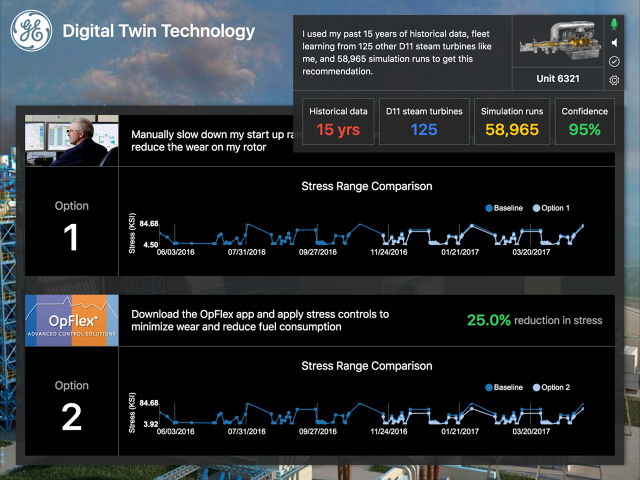
The problem feels more compelling when the machine itself tells you. “Damage rate has increased by four times in the last six months,” says a real turbine, running in Southern California, about the state of its rotor. “If this continues, I will lose 69.9% of my useful life.” My gosh, the machine is dying!
The twin also suggests how to fix the problem, by adjusting speeds manually or installing an app that makes changes automatically. The twin came up with recommendations by running 58,965 simulations based on 15 years of data from 125 of the same model turbine. Fortunately, this talking machine is good at making a long story short.
Fast Company , Read Full Story
(32)

